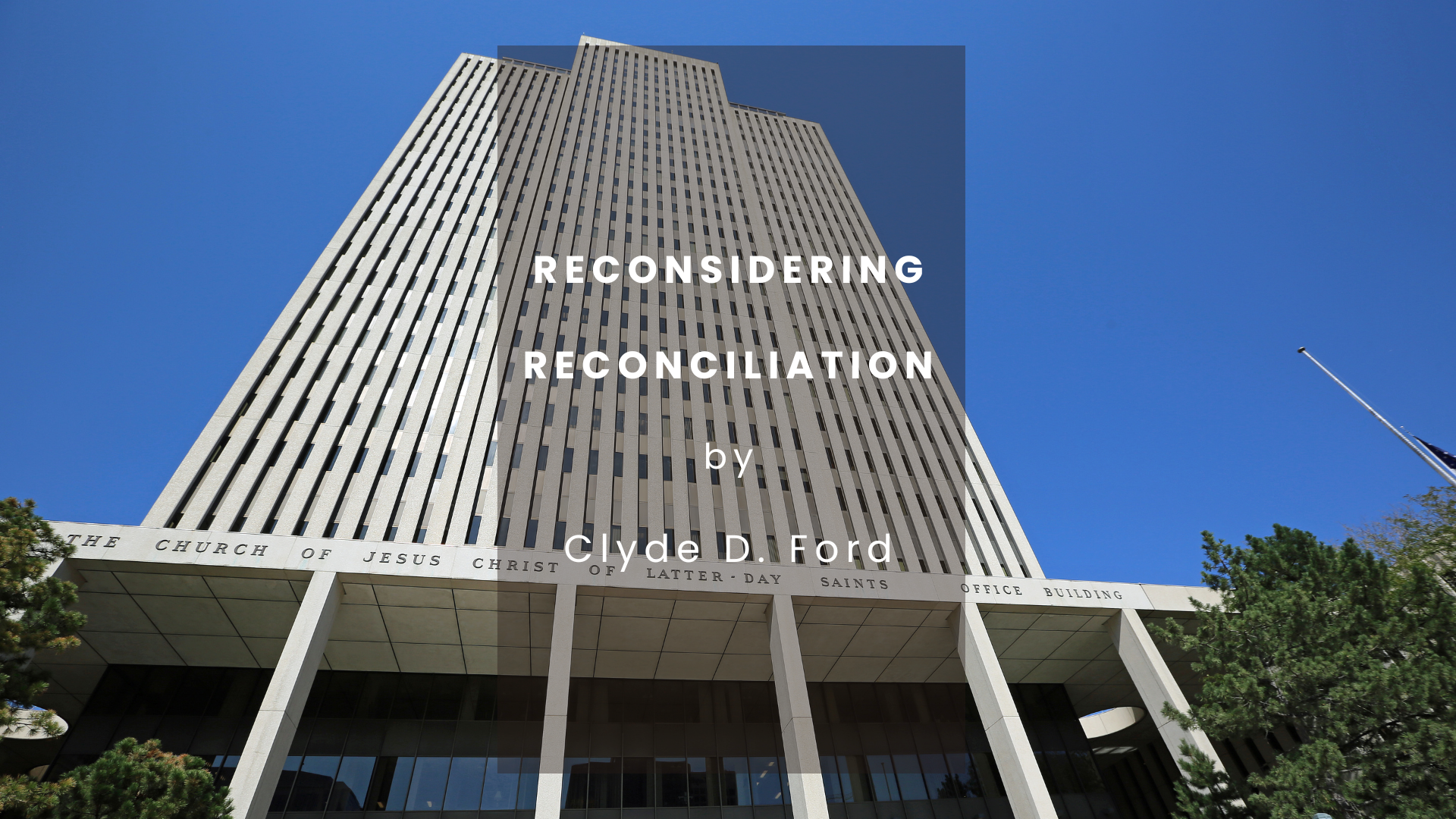Articles/Essays – Volume 57, No. 2
Reconsidering Reconciliation
Dear Editor,
I read with interest Robert A. Rees, “Truth and Reconciliation: Reflections on the Fortieth Anniversary of the LDS Church’s Lifting the Priesthood and Temple Restrictions for Black Mormons of African Descent” in the summer 2023 issue of Dialogue (56, no. 2).
My biography is much like Rees’s. I was born in the latter years of the “silent generation,” growing into young adulthood in a white environment while trying to come to grips with the civil rights turmoil. I too found the birth lineage explanation for the restrictions difficult to reconcile with the Mormon emphases on divine justice and individual sin/punishment. Likewise, the premortal behavior justification ignored the equally core doctrines of repentance and forgiveness. Like Rees, I congratulated myself for shedding my “scales of racial prejudice” while remaining for a long time largely blind to my intransigent unconscious prejudice and the privileges of my whiteness, sex, and sexual orientation/identity.
Despite our similarities, I found myself disagreeing with Rees on several issues. I was disappointed with his unnecessary vitriolic characterizations of earlier LDS beliefs (“noxious fiction,” “inhumane beliefs,” “false teachings,” “evil perpetrated in the name of revelation and divine sanction,” among others). For another, Rees contends that there is “little question” that the priesthood restriction was instituted to maintain white racial purity by proscribing miscegenation (61). I must admit to finding this explanation wanting. How does this explain why a black man and his black wife should be restricted from temple worship? Might the priesthood restriction be better explained by the theory that Brigham Young’s concern, whether political or theological, was with a black man presiding over a white man in Church hierarchy?
Rees also distorts the affirmations of the Church’s “Race and the Priesthood” Gospel Topics essay. Consider the following: “Official acknowledgement that the practice [priesthood restriction] had been wrong all along in the ‘Race and the Priesthood’ essay” (71). To my reading, the essay only states that the contemporary Church “disavows” as current official Church doctrine the “theories” that have been used to justify the restrictions practice.
Rees seems to be proposing that the (or one) primary mission of the Church should be leadership in progressive social issues and bemoans the fact that the Church squandered the opportunity to be “at the vanguard of various racial equality movements” (67). Rather, the Church focus on saving (exalting) souls in the afterlife requires the cultivation of a positive image and avoidance of unnecessary alienation of segments of the population, which, it seems to me, is best accomplished by steering a moderate direction that avoids both excessive cultural lags and being at the forefront of social revolutions.
How might the Church best deal with the problem of racism persistence despite repeated official condemnations of racism in all its forms? It seems to me that what is needed is continuing encouragement to (1) recognize our internal racist tendencies, (2) strive to limit their adverse effects on our emotional reactions and behavior, and (3) minimize the inheritance of similar tendencies by the rising generation by working to eliminate the visible and invisible cultural influences and pointing out objectional behaviors and the harms and injustice of racism. Contrary to Rees, I don’t see why this entails the rehashing of history, apologies, or the disparaging of Church leaders, past and present. Such approaches render one’s work less likely to be taken seriously in the Latter-day Saint community.
Since Church leaders tend to be (overly) conservative, I agree with Rees that an important role of our scholars is to encourage movement in a progressive direction. One approach might be to heighten our awareness and deepen our understanding of the definitions of racism. As philosopher and ethicist Judith Lichtenberg has observed: “In general, white people today use the word ‘racism’ to refer to the explicit conscious belief in racial superiority . . . black people mean . . . a set of practices and institutions that result in the oppression of black people . . . [so if a white person denies a consciousness of racism, this] is insufficient to prevent injustice and suffering that divides along racial lines.” (“Racism in the Head, Racism in the World” in Race, Class, Gender, and Sexuality: The Big Questions, edited by Naomi Zack, Laurie Shrage, and Crispin Sartwell [Oxford: Blackwell, 1998], 43–44). This challenges Mormon scholars to explore the unrecognized biases among groups of white, heterosexual Mormons or even the institutional effects of a ruling hierarchy made up exclusively of white, male heterosexuals from the silent generation. As one of our more distinguished Mormon scholars, I am confident that Rees has many meaningful insights to yet share with us, and I look forward to his future work.
Clyde D. Ford
Salt Lake City, Utah


 Back to full Issue
Back to full Issue

